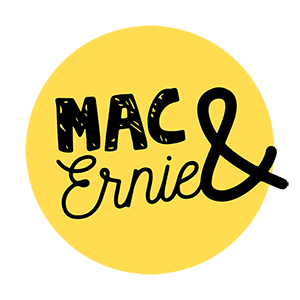What small businesses should know about the 30% Apple fees coming to Meta’s boosted posts
In a recent turn of events, Apple's updates to its App Store Review Guidelines have sent ripples through the social media advertising landscape, particularly impacting small businesses that rely heavily on boosted posts for marketing on platforms like Facebook and Instagram. The update introduces a 30% service charge on transactions made through iOS apps, posing a significant challenge for businesses looking to amplify their online presence.
To navigate this change and continue supporting small businesses, Meta, the parent company of Facebook and Instagram, has announced alternative avenues for advertisers to boost their content without incurring the Apple service charge. Here's what you need to know about these developments and how they can benefit your business:
What's changing?
Starting later this month (Feb 2023), when advertisers in the US (it’s rolling out there first) use the Facebook or Instagram iOS app to boost a post, they will be billed through Apple, which retains a 30% service charge on the total ad payment. This fee is applied before any applicable taxes and is retained by Apple, not Meta.
Understanding the impact this could have on small businesses, Meta has taken steps to offer flexible solutions. Advertisers can now bypass Apple's in-app purchase fees by logging into Facebook and Instagram through their mobile or desktop websites. This means that when boosting content via Facebook.com and Instagram.com, advertisers will enjoy all the same features as boosting posts from the iOS apps, but without incurring the Apple service charge.
Boosted posts
Boosted posts serve as a low-barrier-to-entry advertising product, allowing businesses to quickly promote content without the need for complex campaign setups. This feature has been particularly valuable for small businesses, serving as a cost-effective way to reach new audiences and drive engagement across Facebook and Instagram. I’ll be honest, it’s not my favourite way to advertise but I understand that it’s the easiest way and Meta’s Ads Manager is complex and confusing for many small business owners.
Unfortunately, it’s now time to learn, at least a little bit if you want to keep using Meta’s advertising functions. If you’re a small business in Australia please get in touch if you would like any help setting your ads up or learning how to do it yourself.
Changes to payment processes
In addition to bypassing the Apple service charge, advertisers should be aware of changes to the payment process when boosting posts through the Facebook and Instagram iOS apps. Under the new system, businesses on iOS will need to pay in advance by adding prepaid funds to their accounts. If these funds are added within the iOS apps, the Apple service charge will apply. However, adding funds through desktop computers or mobile web browsers allows advertisers to boost content without incurring fees.
Meta's stand against Apple's policies
Meta's decision to not absorb the fees and instead offer workarounds to its advertisers seems pretty typical of them, but also underscores the broader debate surrounding Apple's in-app purchase fees. While Meta's actions demonstrate a pushback against these policies, it's uncertain whether they will prompt Apple to reconsider its approach as it could open up a debate as to why Meta gets special treatment when so many app developers are faced with the same fees.
What's next?
While these changes currently apply to the United States, it's important to note that additional markets and countries will likely be subject to similar fees later this year. However, advertisers globally can use the option to boost content from Facebook.com and Instagram.com without incurring the Apple service charge.
If you’re a small business in the United States, it’s time to get familiar with Business Suite and Ads Manager. If you’re in Australia or any other countries, you can expect these changes to take effect soon, so keep that in mind if you use your iPhone to boost posts. In my opinion, it might be time to think about alternative types of ads too as sponsored posts are often not the most cost-effective or effective forms of advertising.
That’s all we know right now, but I’ll continue to update this article as needed.
Meanwhile, please follow me on Instagram or Facebook or sign up for my newsletter if you would like to keep on top of important changes or to get qualified and relevant advice on marketing and social media.
❤️ Hi I’m Erika ✌️ I’m a marketing specialist with a BA in Media and Comms, Masters of Marketing, Certificate in CX (Customer Experience) and over 25 years marketing experience.
I’m well-placed to help you navigate the sometimes overwhelming world of marketing and social media. I work with you one-on-one or create fun and action-oriented workshops and webinars for groups, organisations and businesses.
Book a free discovery call with me or simply email me to get the conversation started.

